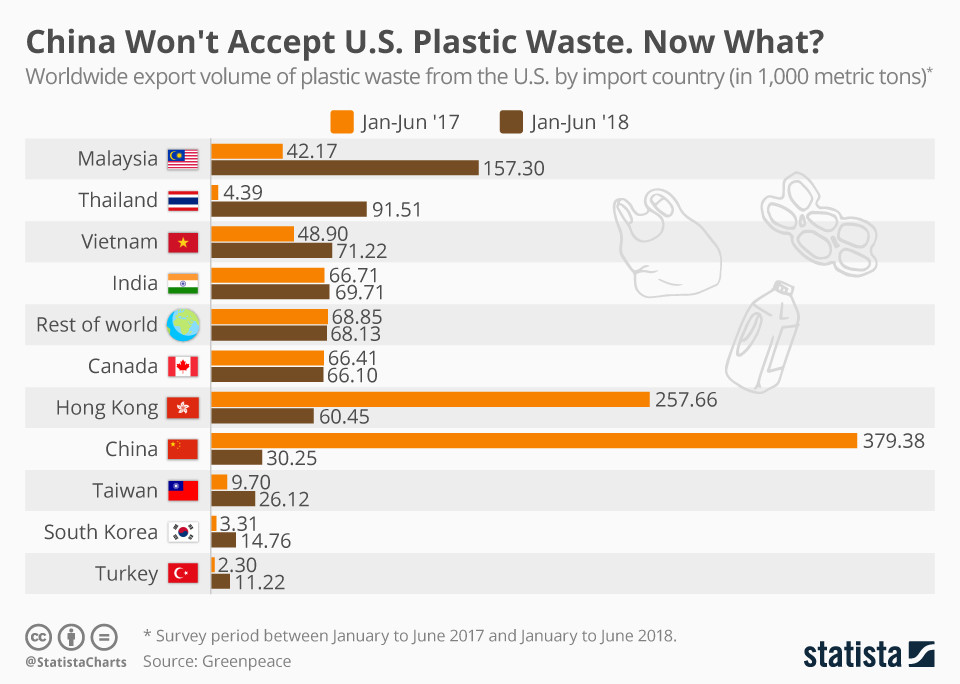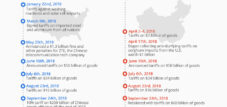Die US-Kunststoffexporte nach China brachen zwischen dem ersten Teil des Jahres 2017 und dem ersten Teil des Jahres 2018 um 92 Prozent ein. Auch die Kunststoffabfallimporte Hongkongs aus den USA gingen im gleichen Zeitraum deutlich zurück und sanken um 77 Prozent.
Nach Angaben des Wired wird der durch das Verbot verursachte Kunststoffüberlauf (Spillover) in veraltete Verbrennungsanlagen verbracht oder auf Deponien entsorgt. Für Städte und kleinere Ortschaften ist die Verbrennung ihres Recyclings eine der letzten Maßnahmen zur Entsorgung der Abfälle, da die ausländischen Exporte reduziert wurden.
Das Recycling durch Verbrennung stellt die Umwelt und die Gemeinden, die diese Verbrennungsanlagen umgeben, vor viele Probleme. Die Verbrennungsanlagen sind nicht mit modernen Mechanismen zur Verringerung der Umweltverschmutzung ausgestattet, wie z.B. Wäscher auf Schornsteinen. Aus diesem Grund setzt die Verbrennung dieser Kunststoffe schädliche Dioxine in die Luft frei. Verbindungen, die mit einem erhöhten Risiko für Krebs und Asthma einhergehen. Die Gemeinden, die viele dieser Verbrennungsanlagen und Deponien umgeben, sind überwiegend schwarze und lateinamerikanische Einwohner, die einem höheren Expositionsrisiko gegenüber den negativen Auswirkungen dieser Schadstoffe ausgesetzt sind.
U.S. plastic waste exports to China plummeted by 92 percent between the first part of 2017 and the first part of 2018. Hong Kong’s plastic waste imports from the U.S. also dropped significantly over the same time period, dipping by 77 percent.
According to reporting done by the Wired, plastic spillover caused by the ban is being sent to aging incinerators or dumped in landfills. For cities and smaller localities, burning their recycling is a last-ditch effort to dispose of the waste, since foreign exports have been cut back.
Burning recycling poses many problems for the environment and the communities that surround these incinerators. The incinerators have not been outfitted with up-to-date pollution reducing mechanisms, like scrubbers on smoke stacks. Due to that issue, setting these plastics on fire releases harmful dioxins into the air, compounds that are linked to increased risks for cancer and asthma. Largely, the communities that surround many of these incinerators and dumping sites are black and Latino residents, who are at a higher exposure risk to the adverse effects of these pollutants.


